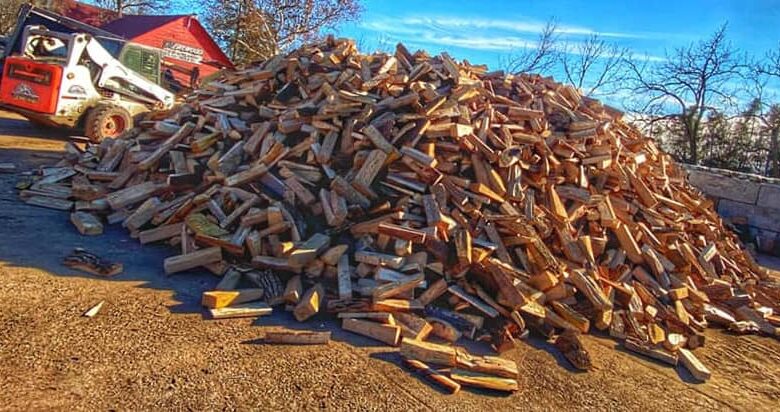10 Advantages of Kiln Dried Wood: Why Quality Matters for Your Heating Needs

When it comes to choosing the right fuel for your fireplace, wood-burning stove, or outdoor fire pit, the quality of your wood makes all the difference. While many people focus solely on wood species, the drying method is equally crucial for optimal performance. Kiln dried wood has revolutionized the way we approach home heating, offering superior benefits over traditional air-dried alternatives. Understanding these advantages can help you make an informed decision that enhances your heating experience while providing better value for your investment.
1. Lower Moisture Content for Superior Burning
The primary advantage of kiln dried wood lies in its consistently low moisture content, typically below 20%. This controlled drying process removes excess water that would otherwise hinder combustion efficiency. When wood contains high moisture levels, much of the fire’s energy is wasted simply evaporating water rather than producing heat. Kiln dried wood ignites more easily, burns hotter, and maintains consistent flames throughout the burning process. This means you’ll experience immediate warmth rather than waiting for wet wood to dry out in your firebox.
2. Dramatically Reduced Smoke Production
High moisture content in wood creates excessive smoke, which not only reduces air quality but can also cause eye irritation and breathing difficulties. Kiln dried wood produces significantly less smoke because there’s minimal moisture to create steam and incomplete combustion byproducts. This cleaner burn is particularly beneficial for indoor use, as it reduces the risk of smoke entering your living space and minimizes the buildup of creosote in your chimney system.
3. Enhanced Heat Output and Energy Efficiency
The energy efficiency of kiln dried wood is substantially higher than that of air-dried alternatives. With less energy wasted on evaporating moisture, more heat is directed into your living space. This increased efficiency means you’ll use fewer logs to achieve the same level of warmth, making kiln dried wood more economical in the long run. The consistent high heat output also means more reliable temperature control for your home heating needs.
4. Longer, More Consistent Burn Times
Kiln dried wood provides predictable and extended burn times due to its uniform moisture content and density. Unlike air-dried wood, which can vary significantly in moisture levels even within the same batch, kiln dried wood offers consistent performance. This reliability allows you to better plan your heating schedule and reduces the frequency of refueling your fire, making it more convenient for overnight heating or extended use.
5. Elimination of Insects, Mold, and Fungal Growth
The high-temperature kiln drying process effectively eliminates insects, larvae, mold spores, and fungal growth that commonly inhabit freshly cut or air-dried wood. This sterilization process means you won’t introduce unwanted pests or allergens into your home environment. Additionally, the low moisture content prevents future mold and fungal development during storage, maintaining the wood’s quality and your family’s health.
6. Immediate Usability Upon Purchase
Unlike air-dried wood that may require additional seasoning time, kiln dried wood is ready for immediate use. This convenience is particularly valuable when you need fuel quickly or don’t have adequate space or time for proper wood seasoning. The instant availability eliminates the guesswork involved in determining whether air-dried wood has reached optimal moisture levels for burning.
7. Reduced Creosote and Chimney Maintenance
The clean-burning properties of kiln dried wood significantly reduce creosote buildup in chimneys and flues. Creosote, a tar-like substance formed from incomplete combustion, poses serious fire hazards and requires regular professional cleaning. By using kiln dried wood, you’ll extend the intervals between chimney cleanings and reduce associated maintenance costs while improving safety.
8. Minimal Spark and Pop Production
The controlled moisture content in kiln dried wood reduces the violent expansion of steam pockets that cause logs to spark and pop during burning. This safer burning characteristic is particularly important for open fireplaces or when children and pets are present. Fewer sparks also mean less risk of damage to fireplace screens, glass doors, or surrounding furnishings.
9. Superior Storage Characteristics
Kiln dried wood is easier to store and maintain than air-dried alternatives. Its low moisture content prevents rot, decay, and pest infestation during storage. The wood remains lightweight and manageable, and its consistent quality means you don’t need to sort through pieces of varying moisture levels. Proper storage of kiln dried wood in a dry location will maintain its optimal burning characteristics indefinitely.
10. Environmental Benefits and Cleaner Emissions
The complete combustion achieved with kiln dried wood produces fewer harmful emissions and particulates compared to burning wet or improperly seasoned wood. This cleaner burn reduces your environmental impact and contributes to better air quality in your community. Many areas with strict emissions regulations specifically recommend or require the use of properly dried wood to meet environmental standards.
Why Choose Professional Kiln Dried Wood Suppliers
While the advantages of kiln dried wood are clear, sourcing quality product from reputable suppliers is essential. Professional kiln drying requires specialized equipment, temperature control, and expertise to achieve optimal results consistently.
For those seeking premium kiln dried logs in the UK, Kiln Dried Logs Halifax offers exceptional quality products that deliver all the benefits mentioned above. Their professional kiln drying process ensures consistently low moisture content, while their commitment to sustainable sourcing provides peace of mind for environmentally conscious consumers. With convenient delivery options and various log sizes available, they make it easy to access high-quality fuel for your heating needs. Moreover, they offer both kiln dried hardwood logs and softwood logs to suit any of your needs.
When selecting a supplier, look for companies that provide moisture content guarantees, offer various wood species, and maintain proper storage facilities to preserve wood quality until delivery.
Conclusion
The investment in kiln dried wood pays dividends through improved heating efficiency, reduced maintenance costs, enhanced safety, and superior user experience. While the initial cost may be higher than air-dried alternatives, the numerous advantages – from immediate usability to cleaner burning and longer storage life – make kiln dried wood the intelligent choice for discerning homeowners.
Whether you’re heating your home through long winter months or simply enjoying occasional fires for ambiance, choosing kiln dried wood ensures optimal performance, safety, and value. The consistent quality, environmental benefits, and practical advantages make it an investment in comfort, efficiency, and peace of mind for years to come.




